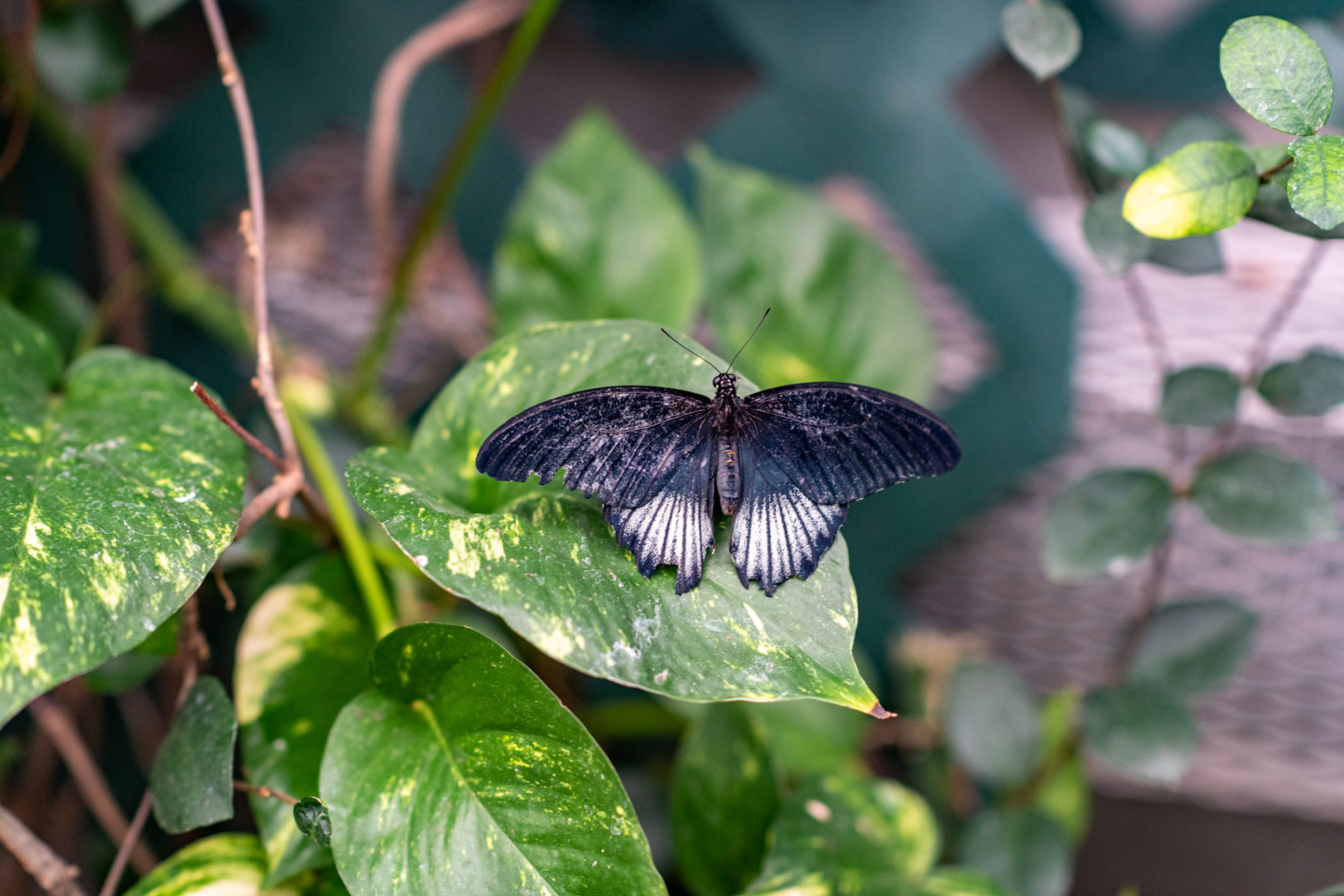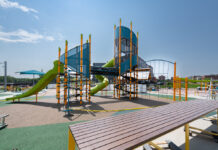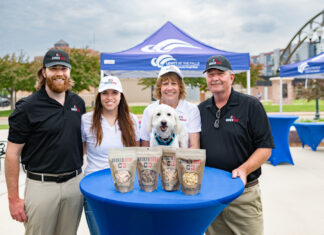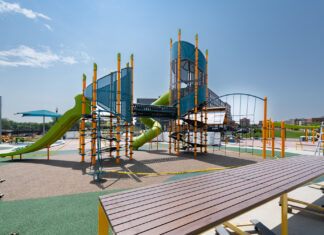Check out the Butterfly House & Aquarium in Sioux Falls to go “above, below, and beyond.” For years, the conservatory has introduced guests to learn and experience aquarium and butterfly habitats.
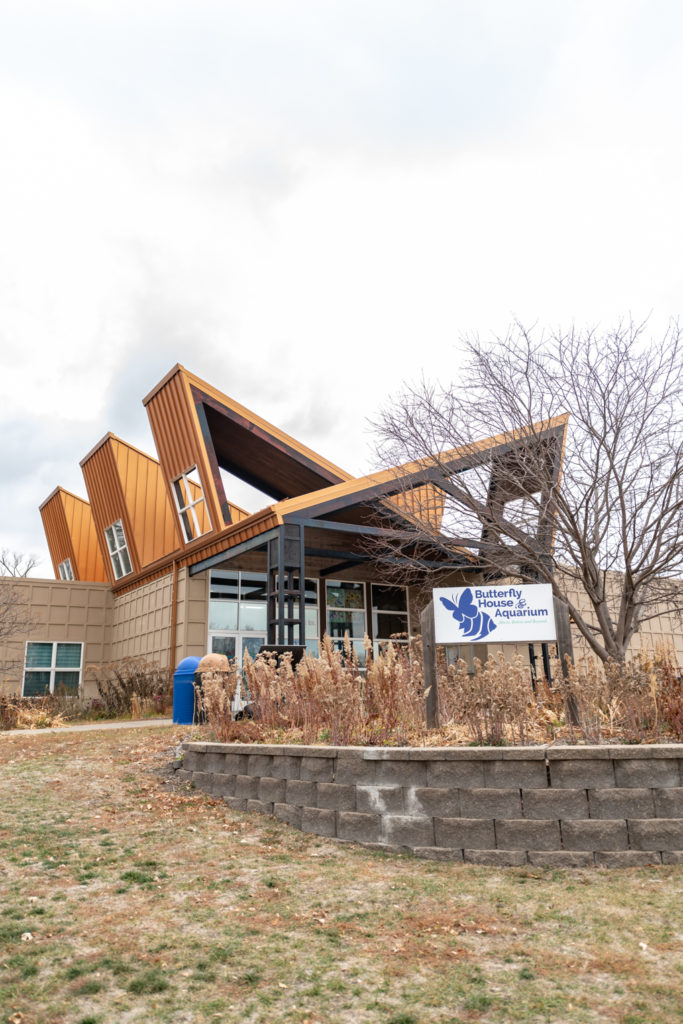
“Our mission is to inspire conservation of the vital building blocks of sea, sky, and land,” said Ky Uthe, marketing and development specialist.
Uthe expresses his hope that guests walk away with a deeper understanding of species that are not always at the forefront of conservation efforts.
“We hope guests walk away with an emotional connection to these animals,” said Uthe.
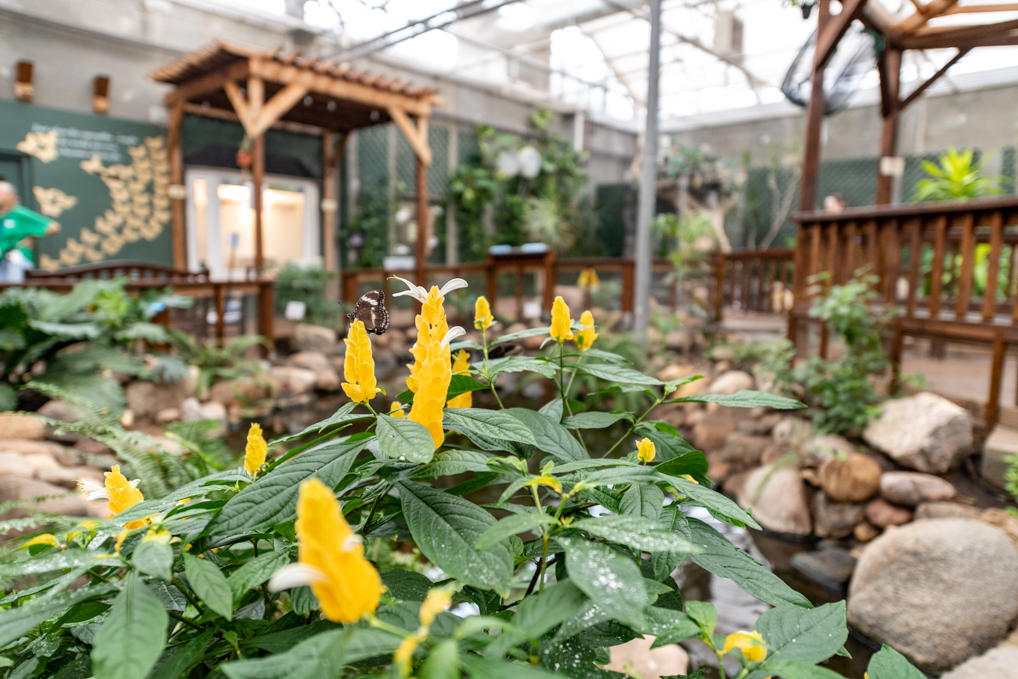
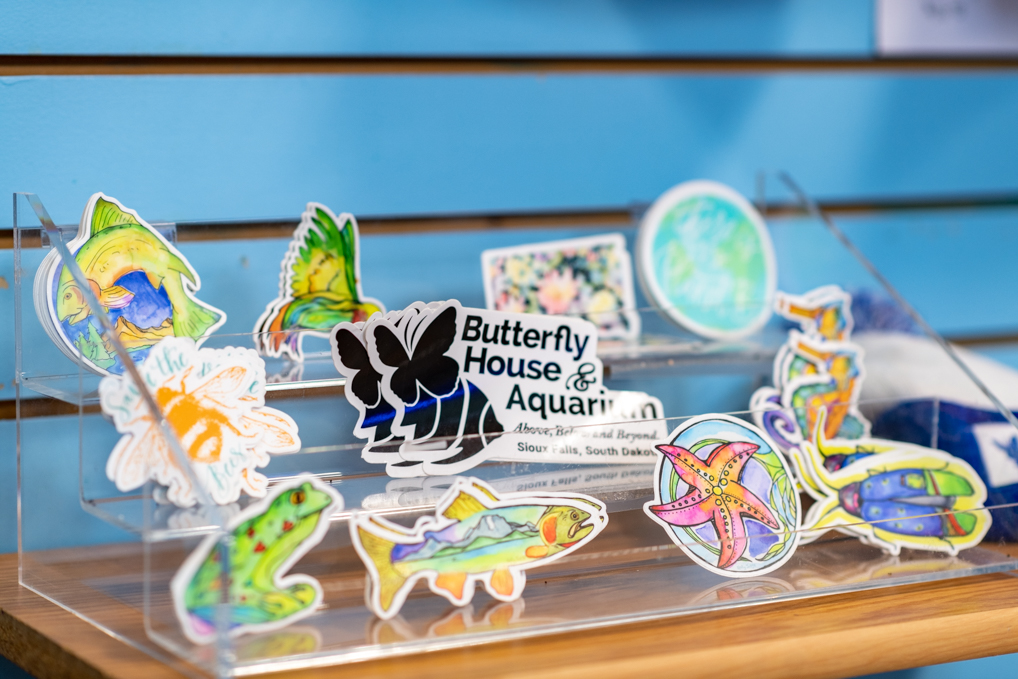
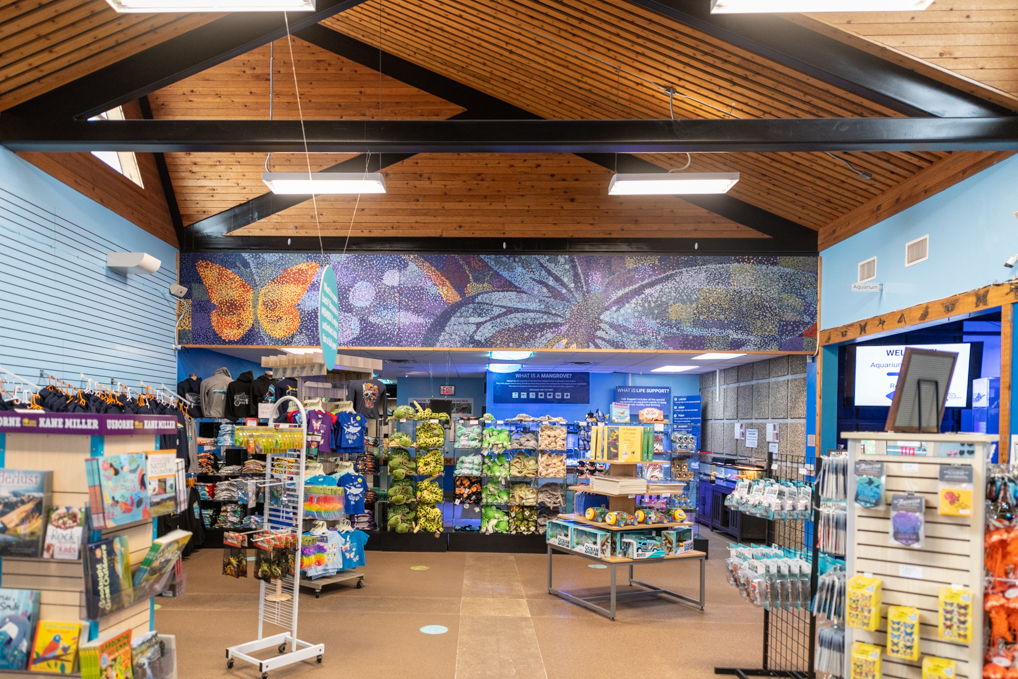
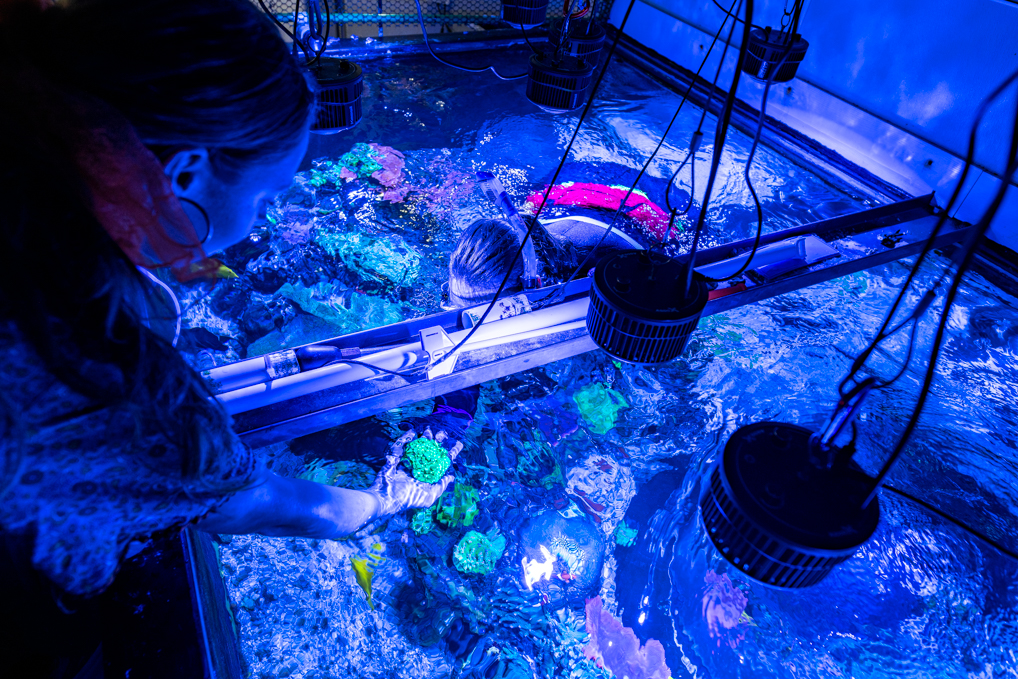
Michelle Coley, director of animal husbandry, brought the 605 team back for a behind-the-scenes look at what keeps the Butterfly House & Aquarium going strong.
Joining me, the editor, for the inside look were lead multimedia designer and photographer Cailyn Patterson, sales and account manager Greta Smith, and office manager Kelsey Sutton.
Admission
INFANT (0-2) // FREE
YOUTH (3-12) // $10
ADULT (13-59) // $14
SENIOR (60+) // $12

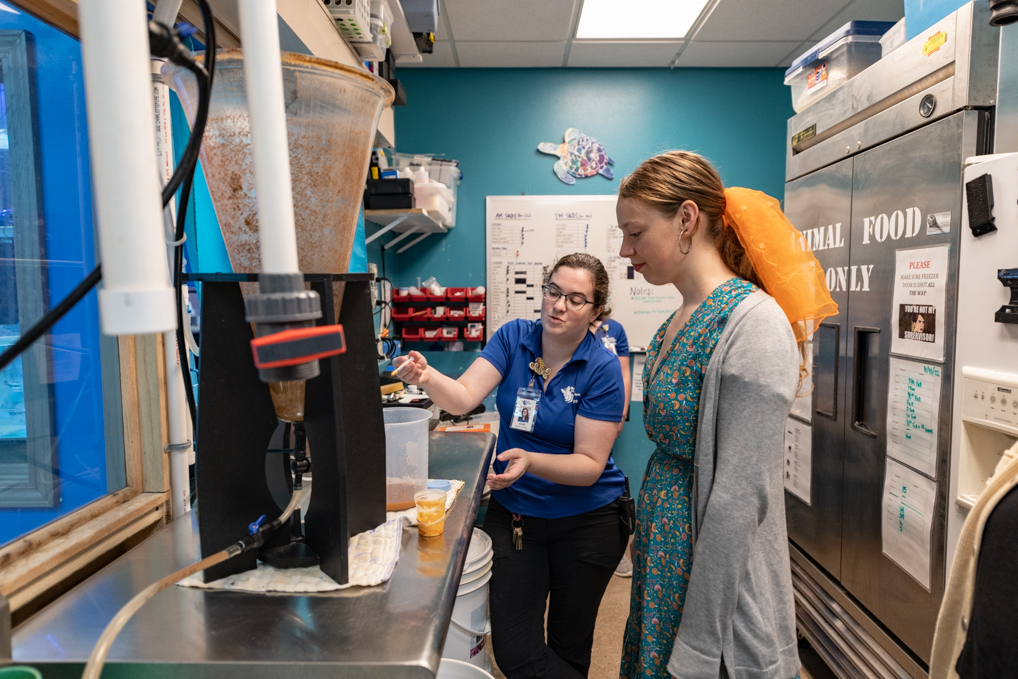
Coley brought us back to see the process and preparation of brine shrimp for their small aquatic animals.
“We take brine shrimp eggs, prep them by hydrating them in water, and set them in a cone overnight with aeration and heat to hatch,” said Coley.
Smith assisted with preparing brine shrimp for feeding and separating brine shrimp eggs into brine cones.
Coley explained that the process for the brine cone takes longer than one would expect.

“The process takes about an hour to complete,” said Coley. “There’s a ma coating covering the egg case, so when the brine shrimp hatch out, we make sure there are no egg casings mixed in with the shrimp.”
Coley adds that jellyfish could face serious harm if the magnetic casings are consumed.
“If they eat the eggs, they could end up developing holes in their digestive cavity and end up dying,” explained Coley.
After separation, the shrimp are ready to be distributed to their jellyfish and seahorses.
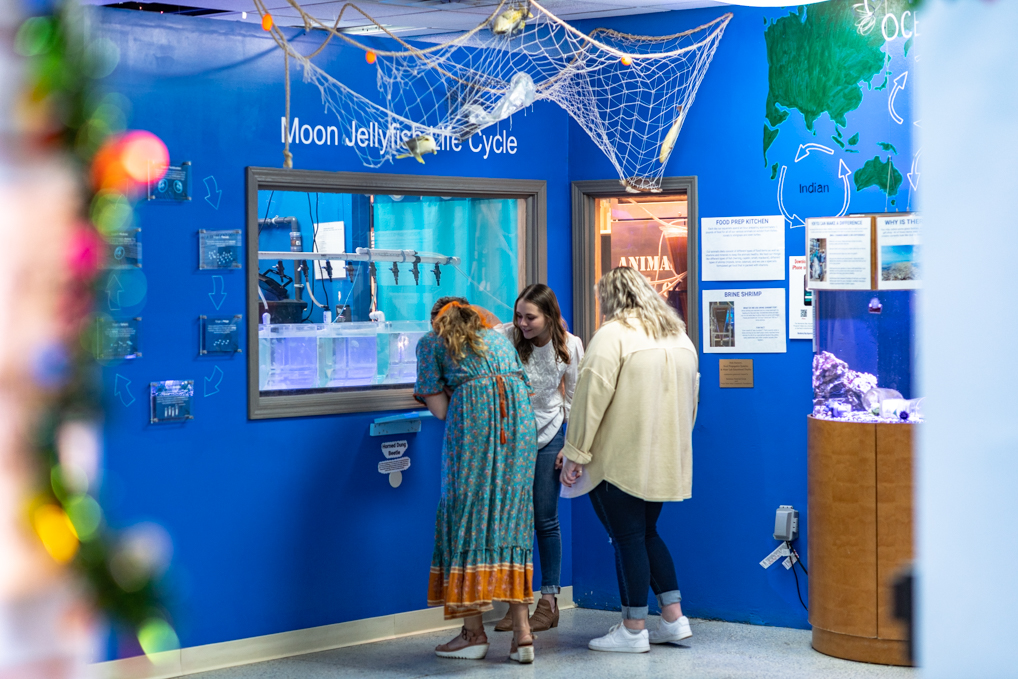
“AS THE WORLD CONTINUES TO EVOLVE TOWARDS A MORE SUSTAINABLE FUTURE, WE WANT THESE ANIMALS TO HAVE REPRESENTATION AND CONSIDERATION IN THE DECISION-MAKING.” -KY UTHE
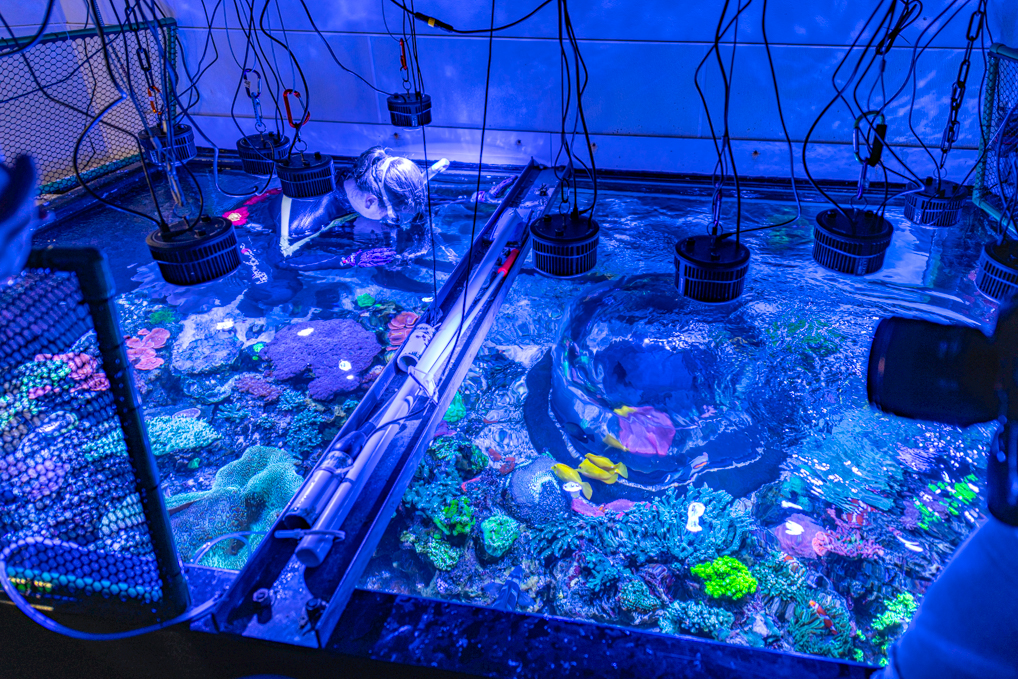
Next, the four of us were introduced to aquarist Shannon Kendrick on a deep dive into their coral tank.
Standing above the tank, we were guided through the process of Kendrick introducing new coral into an existing environment. Coley explains that this is not a simple task.
“We have to measure the amount of light going into our tank and match it to the amount of light the coral has been existing in previously,” said Coley.
This light is measured in Photosynthetically Active Radiation[PAR]. If that measurement is higher or lower than 50, the coral will stress and begin to bleach itself.
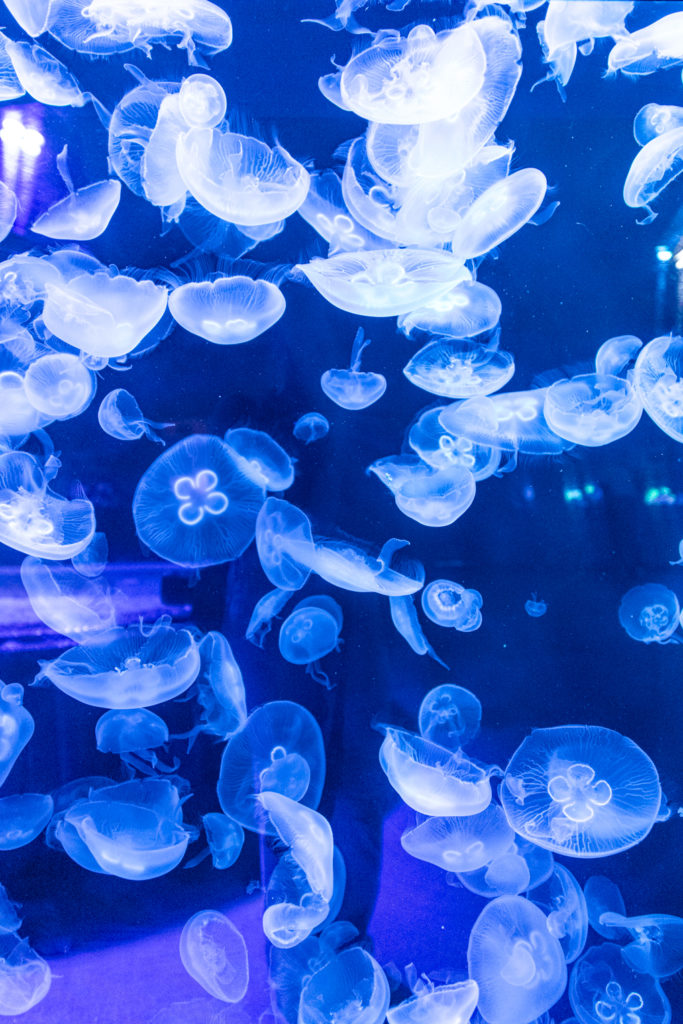
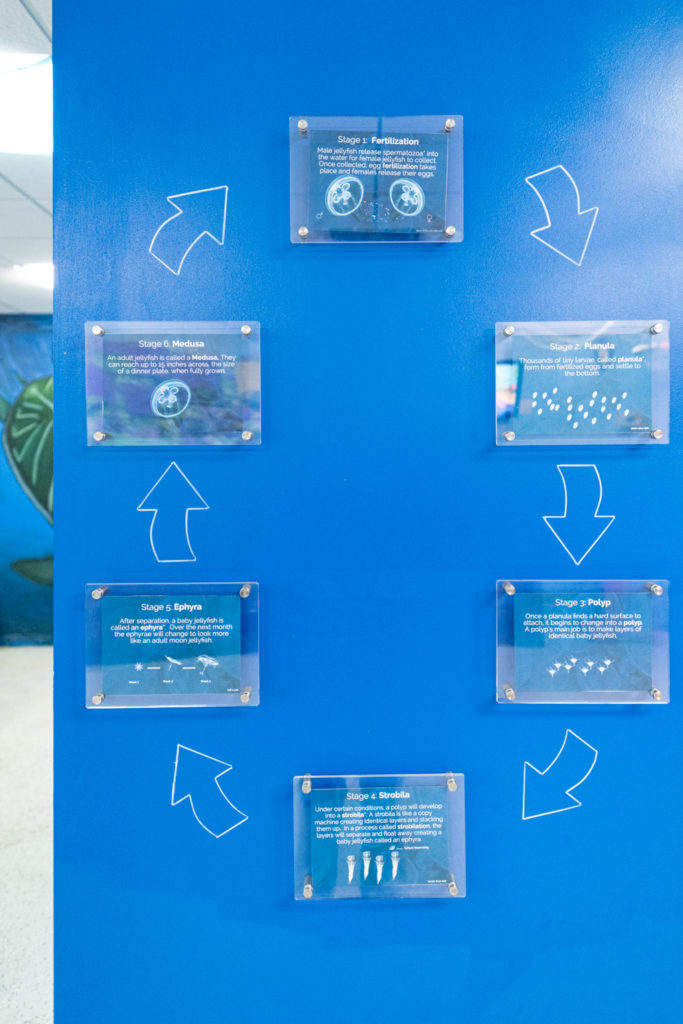

Coley adds that the imbalance of light will affect the way coral produce their food, resulting in death.
“This is one of the big reasons why coral reefs are suffering in the wild,” said Coley. “There’s too much shading in the ocean due to pollution and coral being covered in sunscreen.”
“WE WANT TO MAKE SURE THAT OUR ENVIRONMENTS ARE PROTECTED, ESPECIALLY WITH THE ANIMALS WE KEEP, BECAUSE THEY ARE SENSITIVE TO CHANGES.” -MICHELLE COLEY
Kendrick suited up with her goggles and dove down with a PAR reader, while Patterson stood above to read each location’s average number.
Once Kendrick found the right spot for their new corals, it was time to introduce them to the new environment. When asked to hand Kendrick the new corals, it was a no-brainer for Patterson and Smith.

When adding new specimens to the tanks, Kendrick says the staff are careful to research their food and predators.
“The main focus of this tank is the life of the coral, so our team is always cautious,” said Kendrick.
Our next stop was the butterfly conservatory. After being greeted by tropical weather and a lesson on the trimming of the Fiddle Leaf Tree, we were eager to explore.
We were surprised to learn that the butterflies are accompanied by some helpful friends. Button Quail are scattered throughout the dirt floor of the butterfly house.
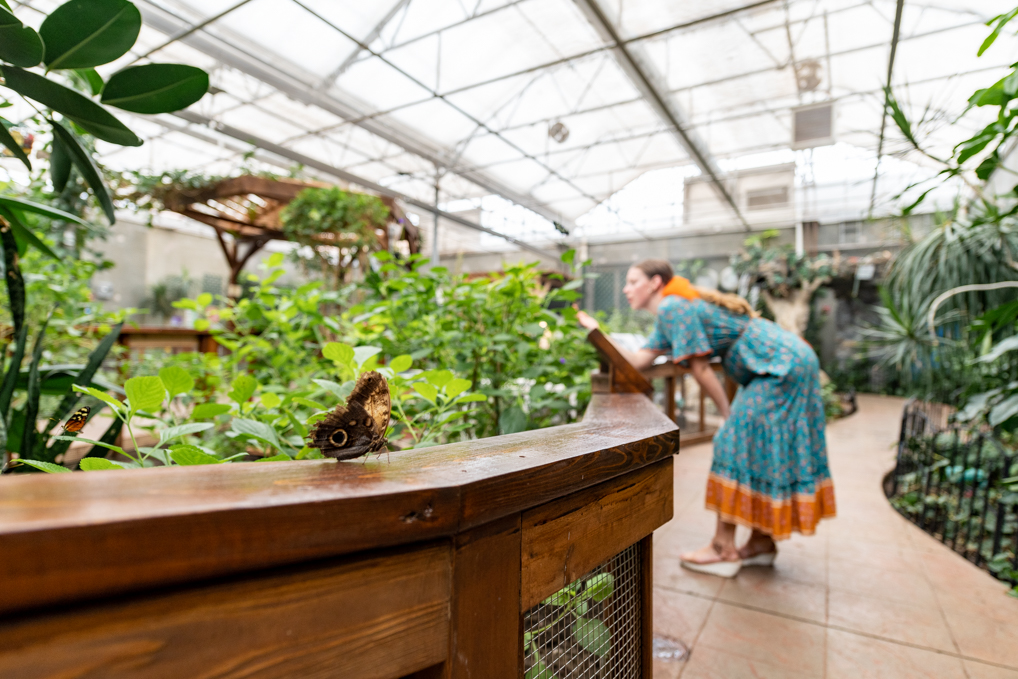
“The button quail are here to help remove pests that we don’t want in our conservatory,” said Coley.
While they are an important aspect of removing the pests from plants and dirt, guests get the added bonus of looking at the birds.
The Butterfly House recently introduced a world map to show visitors where their butterflies have come from. This new educational resource adds a unique aspect to the conservatory.
“It’s an invaluable piece to let people see that we get butterflies from Africa, South America, Costa Rica, and Ecuador,” said Coley.
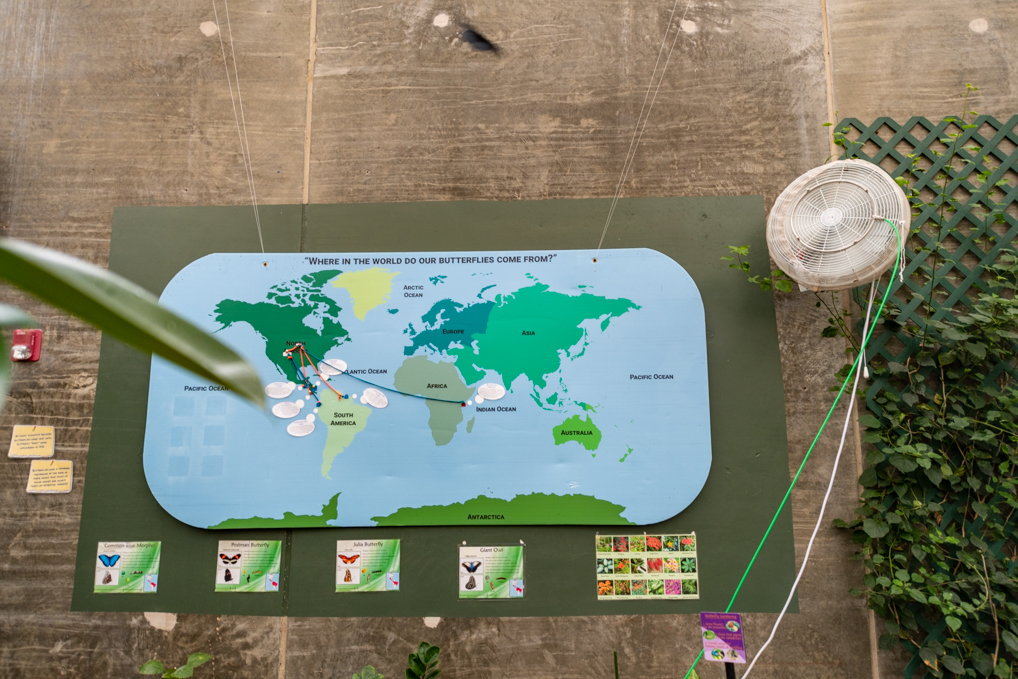


What visitors do not often get to see is the tedious work of their multiple fragile butterfly shipments.
“We typically have 800 butterflies in our conservatory at all times,” said Coley.
New butterflies are shipped and delivered in chrysalis form and it is the staff’s responsibility to pin the chrysalises in preparation for them to hatch.
Sutton, Smith, and I helped pin butterfly chrysalises in preparation for their move to a humidity box. To prevent the butterflies from harming one another as they emerge, we had to pin them with plenty of space between them.

As our tour was coming to a close, we had an exclusive look at their new baby Short- Tailed Nurse Sharks.
Their goal is to train the sharks comfortable with visitors touching and interacting with them. Coley assured us the sharks were comfortable and we were allowed to do a one-finger touch.
Our behind-the-scenes experience was truly eye-opening. We had a first-hand look into how passionate the staff is about their jobs and what they do on a daily basis.
“It was a new take on an educational experience,” said Sutton. “We were able to experience something that their guests don’t get to.”
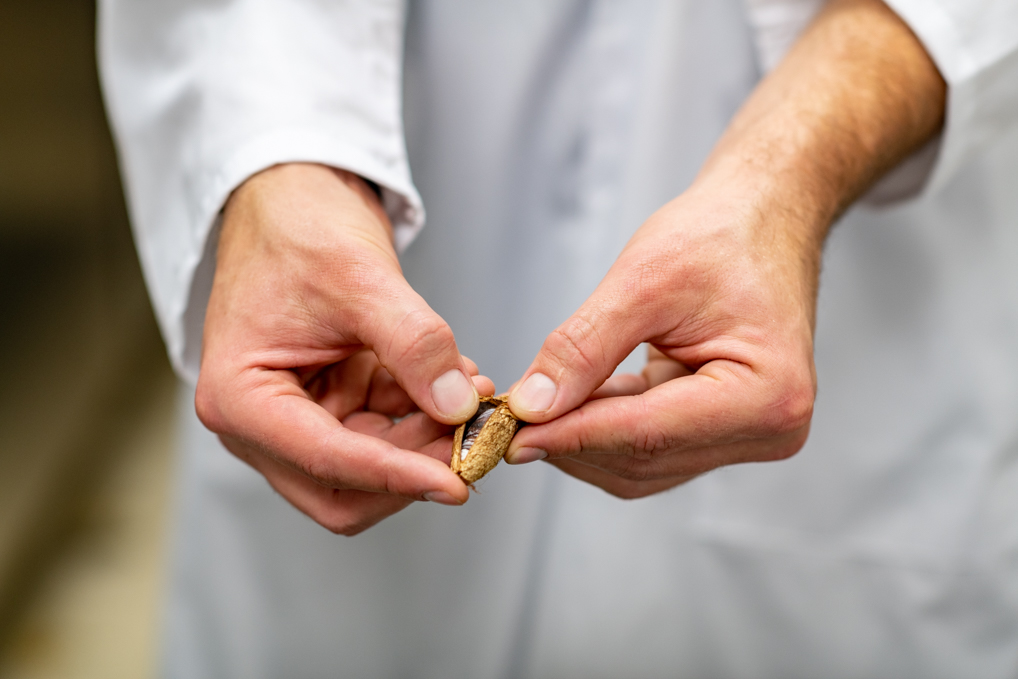
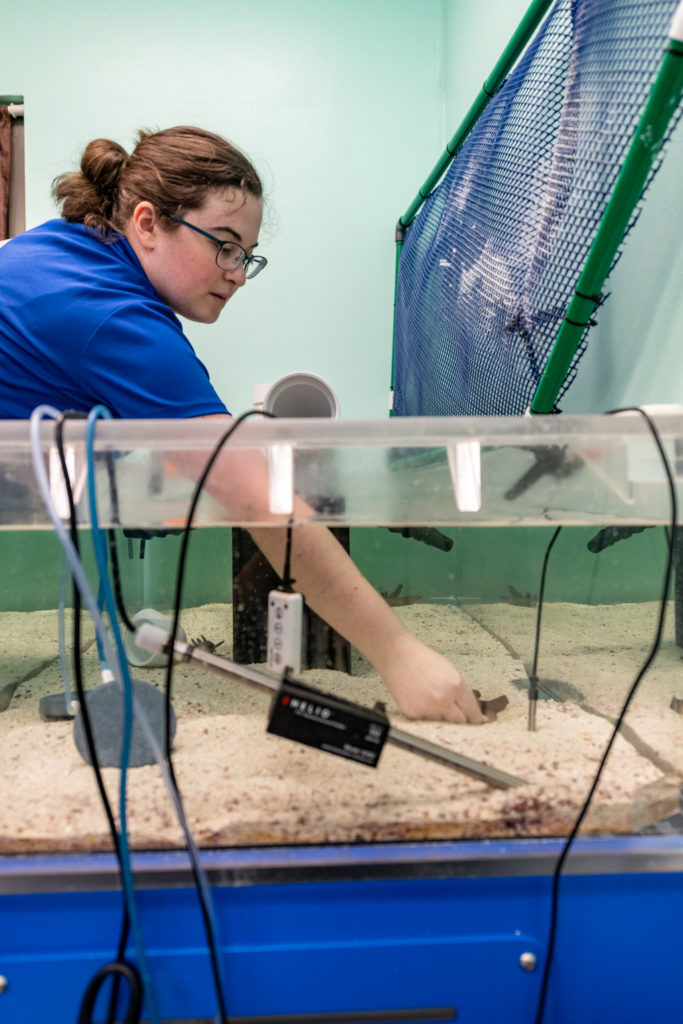
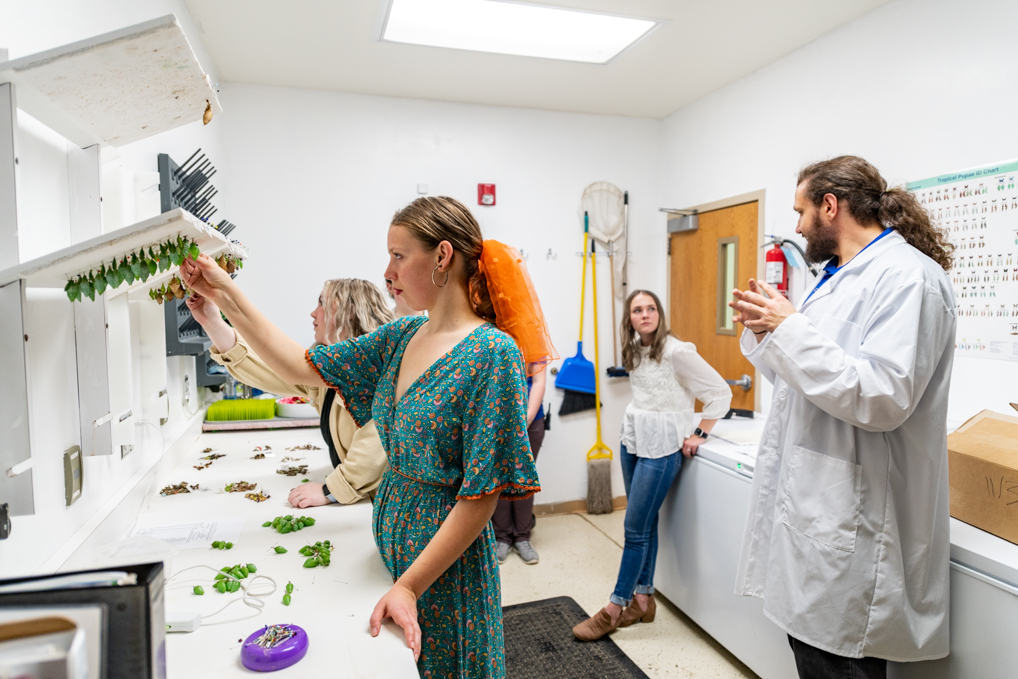
For more information, visit BUTTERFLYHOUSEAQUARIUM.COM.


